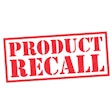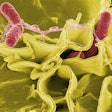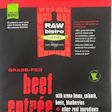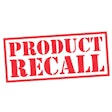
The Food Safety Modernization Act of 2010, recently passed by the US Congress, will require that food producers—including petfood processors—create written, risk-based hazard control programs. HACCP, or hazard analysis and critical control points, is a widely accepted method employed within many food safety management systems. Developing and implementing a HACCP plan can be broken down to a very basic set of steps (also called principles).
Step 1. Analyze the process for potential hazards
This step has three key stages:
- List all potential hazards. Look at every component and step of your operations, including (but not limited to) raw materials and ingredients, processing activities, equipment, methods of storage/distribution, microbial contamination and other toxins, parasites and physical hazards.
- Evaluate all potential hazards for severity and likelihood of occurrence. Consider the seriousness of the effect and susceptibility of intended consumers, impact of secondary problems and magnitude of illness and/or injury. Also, if not properly controlled, how likely is the hazard to affect the ingredient/product, method of preparation in the facility, conditions during transportation, expected storage conditions and preparation steps before consumption?
- Determine if each hazard needs to be addressed in the HACCP plan. Include all significant hazards based on severity and reasonable likeliness to occur. Be sure to justify your decisions and keep a record of all your findings and deliberations during this step—even the hazards you end up not including in the plan. This is a difficult, often subjective, process.
Step 2. Identify critical control points
If deemed
significant—passing all the criteria specified in step 1—a hazard must be
controlled by a CCP. The point in a process that is the last step at which a
control measure can be applied and that is essential to prevent, eliminate or
reduce a specific food safety hazard to an acceptable level is the CCP for that
hazard or process.
Remember, a CCP defines the type of hazard and the process location. A regular, non-critical control point is typically not safety related but rather about maintaining quality or regulatory compliance. A CCP is about safety. Examples include using thermal treatment to destroy pathogens (such as during extrusion) or a metal detector to alert for metallic contaminants.
A proper HACCP plan should end up with only about five CCPS. If you have more, they likely are not all critical or safety related. By choosing a small number of CCPs, you can concentrate your resources in the places where they have the strongest impact. This is the essence of HACCP.
Step 3. Establish a critical limit for each CCP
What is the operational reference point that guarantees the hazard has been identified and killed or removed from the process? That is a critical limit: the maximum and/or minimum value to which a biological, chemical or physical parameter must be controlled.
Basically, a critical limit establishes the absolute limit between safe vs. unsafe. So in identifying these, you want to look at food safety limits, not operational ones. Focus on studies done in your own plant or others. Other sources of data include government guidelines (such as Codex), university publications, scientific journals and publications and industry experts, including your key suppliers.
Step 4. Establish CCP monitoring procedures
Formally, this step is defined as conducting a planned sequence of observations or measurements to assess whether a CCP is under control and to produce an accurate record for future use in verification (NACMCF 1997). The only way to ensure CCPs are working is to constantly monitor them. Loss of control must be identified as soon as possible.
Be sure your procedures include the “four W’s plus H”: who, what, when, where and how to monitor. One of the more common mistakes is with the “when,” particularly if the monitoring is not continuous or is periodic. Consider the interval, which must be short enough to detect possible deviations, and frequency, which should not overly burden the process. Other considerations are the amount of variability in the parameter, how close the operating parameter is to the control limit and how much product you are willing to sacrifice.
Step 5. Develop corrective actions
What do you do if an issue arises—a CCP falls out of control? Under the new food safety legislation, petfood will likely come under the same regulations (or similar ones) as for human food. For example, the Food and Drug Administration requires documented corrective actions in food HACCP plans.
At the least, CA procedures should:
- Determine and correct the cause of non-compliance. How was the critical limit exceeded or otherwise not met? If applicable, determine the root cause, not the “symptom”;
- Determine disposition of non-compliant product. Was it identified and isolated, reworked or destroyed?
- Record the CAs, and causes thereof, that have been taken. In other words, how will this be situation be corrected or addressed to prevent recurrence? (NACMCF, 1997)
Step 6. Establish verification procedures
These are activities other than monitoring that determine the validity of the HACCP plan and verify that the system is operating. The procedures should include short-term and long-term measures, such as audits.
Verification should be ongoing and answer this basic question: “Are we getting it right?” Your procedures should address two issues:
- Is everything we planned actually being performed? Activities should include visual monitoring (live or taped), review of records and internal auditing.
- Are the desired results actually being attained? Ways to measure this include testing finished product, analyzing customer complaints and challenging tests (simulating a safety event and monitoring the performance of the system).
Step 7. Develop recordkeeping procedures
This is fairly straightforward: You need written documentation that the HACCP plan is being carried out. The documentation should include all activities and discussions that have occurred during the first six steps and all ongoing activities and decisions within the HACCP plan.
Many good examples and tools for documentation already exist. For ideas, look to textbooks, universities and key suppliers or other business partners already using HACCP.














